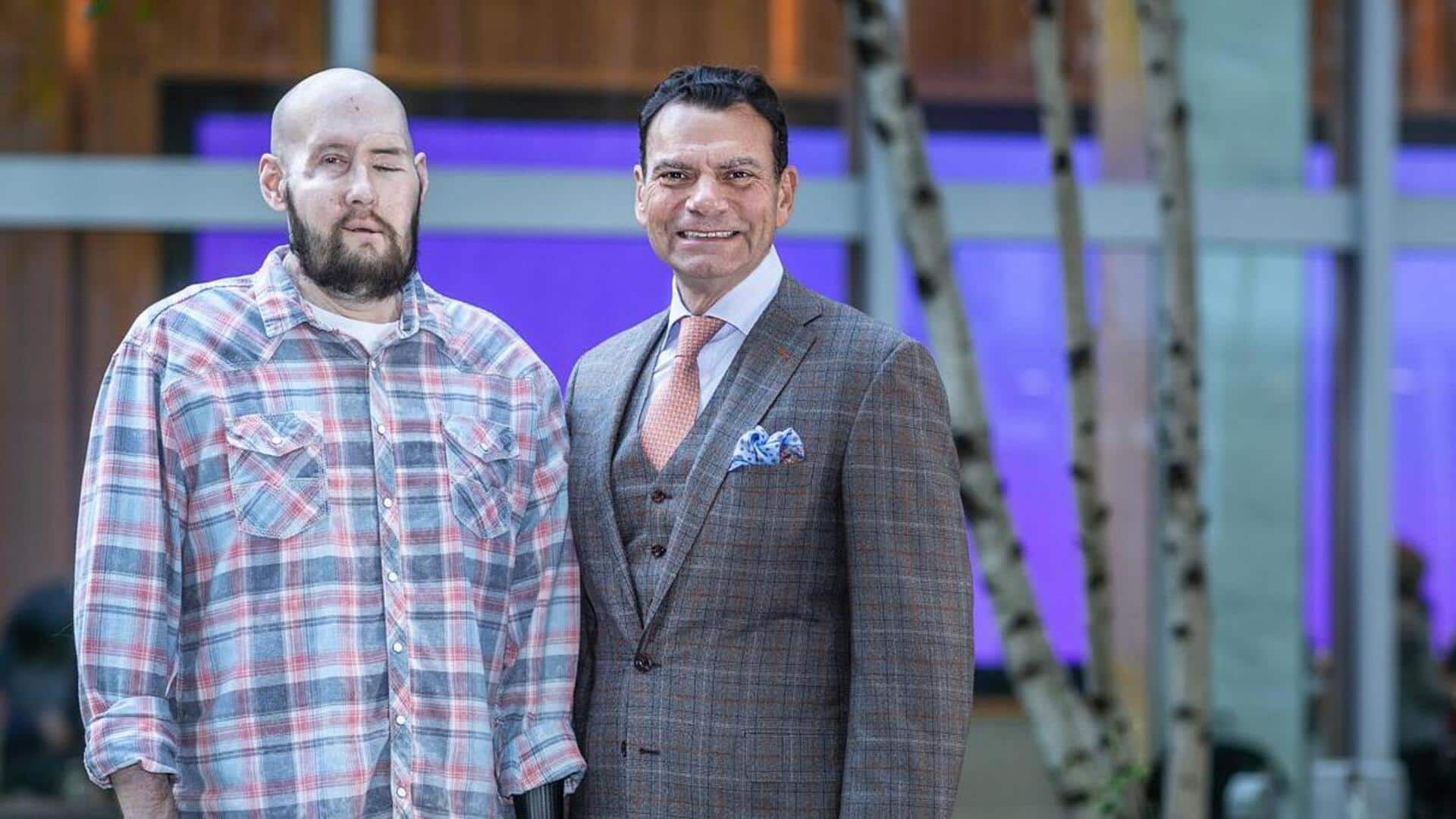
World's first whole-eye transplant performed on 46-year-old US veteran
What's the story
Surgeons in New York, US have successfully completed the world's first whole-eye transplant in a human, a groundbreaking achievement in medical history. The recipient, 46-year-old military veteran Aaron James, underwent the eye surgery during a partial face transplant, that involved a team of more than 140 professionals. Although James has not regained sight in the transplanted eye, it has demonstrated vital signs of health, such as properly functioning blood vessels and a promising retina.
Official words
'A huge step forward'
For years, doctors have only been able to transplant the cornea, the clear front layer of the eye. Dr. Eduardo Rodriguez, who led the surgical team, said, "The mere fact that we transplanted an eye is a huge step forward, something that for centuries has been thought about, but it's never been performed." However, as of now, the transplanted eye is not communicating with the brain through the optic nerve.
Details
The transplant surgery lasted 21 hours
Hailing from Arkansas, Aaron James survived a high-voltage electrical accident that severely damaged the left side of his face, including his nose, mouth, and left eye. The transplant surgery, which lasted 21 hours, was initially intended to include the eyeball as part of the face transplant for aesthetic purposes. Rodriguez said, "If some form of vision restoration occurred, it would be wonderful, but... the goal was for us to perform the technical operation," and have the eyeball survive.
Transplant
The whole eye transplant presents new possibilities
During the transplant, surgeons extracted adult stem cells from the donor's bone marrow and injected them into the optic nerve to encourage healing between the donor and recipient optic nerves. This aimed to replace damaged cells and safeguard the nerve. Dr. Rodriguez believes that even if sight is not restored in this case, transplanting a viable eye globe presents numerous new possibilities. Other research teams are currently working on techniques to connect nerve networks in the brain to sightless eyes.
Insights
James still has vision in his right eye
James, who has retained vision in his right eye, understood that he might not regain sight in the transplanted eye. He said, "I told them, 'even if I can't see... maybe at least you all can learn something to help the next person.' That's how you get started." Dr. Rodriguez remains optimistic, stating, "I don't think anyone can claim that he will see. But by the same token, they can't claim that he will not see."